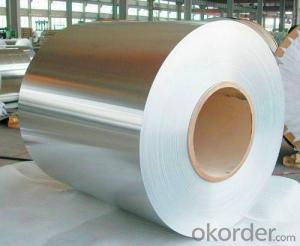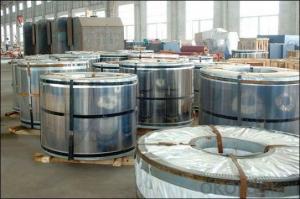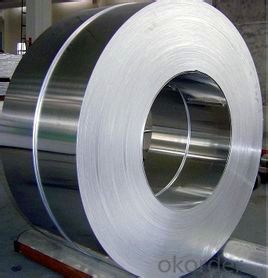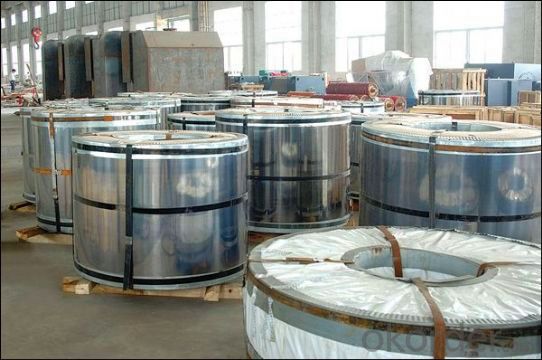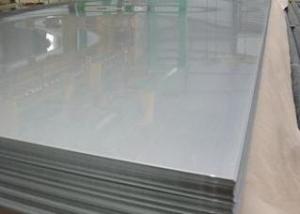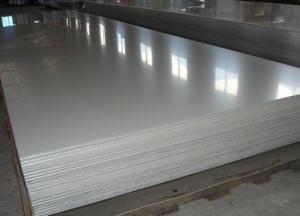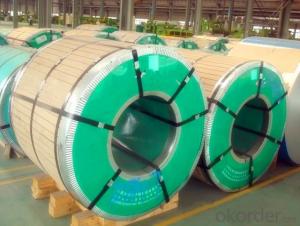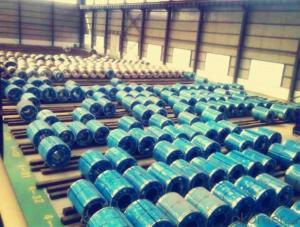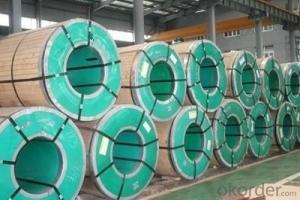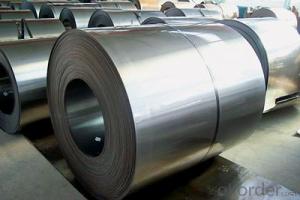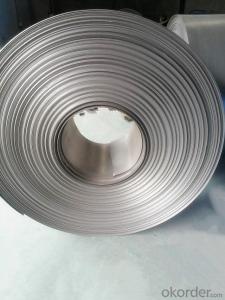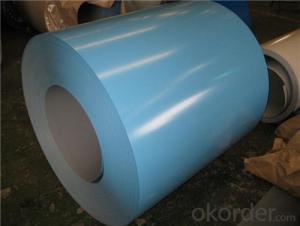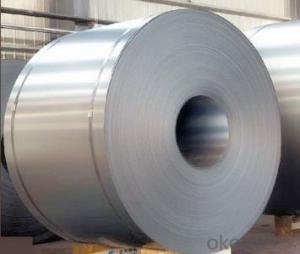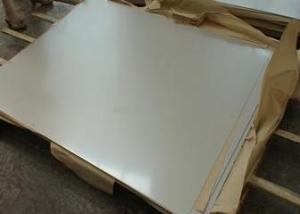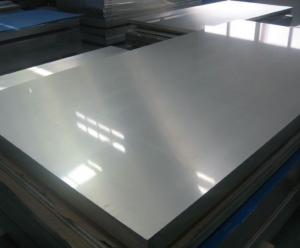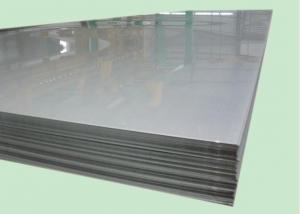201 SERIOUS COLD ROLLED STAINLESS STEEL COIL
- Loading Port:
- Guangzhou
- Payment Terms:
- TT OR LC
- Min Order Qty:
- 100 m.t.
- Supply Capability:
- 10000 m.t./month
OKorder Service Pledge
Quality Product, Order Online Tracking, Timely Delivery
OKorder Financial Service
Credit Rating, Credit Services, Credit Purchasing
You Might Also Like
Packaging & Delivery
| Packaging Detail: | 2b 201 stainless steel coil is packed in export standard package |
| Delivery Detail: | 2b 201 stainless steel coil finished within 15 days |
Specifications
1,2b 201 stainless steel coil thickness0.2~1.5mm
2.Ensure you quality timely delivery
3.2B finish
4.Tolerance 0.01mm
- Q: Can stainless steel strips be used in chemical storage applications?
- Yes, stainless steel strips can be used in chemical storage applications. Stainless steel is resistant to corrosion and has excellent strength, making it suitable for storing and handling various chemicals. Additionally, it is easy to clean and maintain, making it a reliable choice for chemical storage.
- Q: Can stainless steel strips be used in the wastewater treatment industry?
- Yes, stainless steel strips can be used in the wastewater treatment industry. Stainless steel is highly resistant to corrosion and can withstand exposure to chemicals and harsh environments, making it an ideal material for various components in wastewater treatment systems. It is commonly used for constructing tanks, pipes, valves, screens, and other equipment that come into contact with wastewater. The durability and longevity of stainless steel strips make them a cost-effective and reliable choice for the wastewater treatment industry.
- Q: How do stainless steel strips resist intergranular corrosion in welding?
- The primary reason why stainless steel strips are resistant to intergranular corrosion during welding is the presence of chromium. Chromium forms a protective oxide layer on the surface of the steel, which acts as a barrier against oxygen and other corrosive agents. This oxide layer, also known as a passive film, prevents these agents from reaching the underlying metal. During the welding process, the high temperatures can cause the formation of chromium carbides at the weak grain boundaries of the stainless steel. These carbides can reduce the chromium content, making the steel vulnerable to intergranular corrosion. To prevent this, stainless steel strips are typically alloyed with elements such as niobium or titanium. These elements have a strong attraction to carbon. When combined with carbon, they form carbides, allowing the chromium to remain free and form the protective oxide layer. This process is referred to as carbide precipitation or sensitization. Furthermore, stainless steel strips can undergo a heat treatment process called solution annealing or sensitization annealing. This involves heating the steel to a specific temperature and holding it there for a certain period of time. This process allows the carbides to dissolve back into the steel matrix, restoring the chromium content at the grain boundaries and eliminating the susceptibility to intergranular corrosion. In conclusion, the combination of alloying elements and heat treatment plays a crucial role in maintaining the corrosion resistance of stainless steel strips during welding. They prevent the formation of chromium-depleted regions and ensure the integrity of the protective oxide layer.
- Q: Can stainless steel strips be used in the production of medical implants?
- Yes, stainless steel strips can be used in the production of medical implants. Stainless steel is widely used in the medical industry due to its excellent corrosion resistance, durability, and biocompatibility. It can be easily fabricated into strips, which can then be shaped and formed into various medical implant devices such as orthopedic implants, surgical instruments, and dental implants.
- Q: Can stainless steel strips be used in the aerospace engine components?
- Yes, stainless steel strips can be used in aerospace engine components. Stainless steel offers excellent strength, durability, and resistance to high temperatures, making it suitable for various engine parts such as turbine blades, combustion chambers, and exhaust systems. Additionally, stainless steel's corrosion resistance properties are vital in the aerospace industry, ensuring longevity and reliability in harsh operating conditions.
- Q: Are stainless steel strips resistant to impact and vibration?
- Yes, stainless steel strips are generally resistant to impact and vibration due to their high strength and durability.
- Q: Can stainless steel strips be used in marine vessel construction?
- Yes, stainless steel strips can be used in marine vessel construction. Stainless steel is highly resistant to corrosion, making it an excellent choice for marine applications. It is able to withstand exposure to saltwater, which is highly corrosive, without rusting or deteriorating. Stainless steel strips can be used in various areas of a marine vessel, including the hull, deck, fittings, and equipment. Its durability, strength, and resistance to corrosion make it a reliable material for constructing marine vessels that can withstand the harsh conditions of the ocean.
- Q: What is the conductivity of stainless steel strips?
- The conductivity of stainless steel strips can vary depending on the specific alloy and composition of the stainless steel. Generally, stainless steel is considered to be a poor conductor of electricity compared to other metals such as copper or aluminum. This is due to the presence of chromium and other alloying elements in stainless steel that impede the flow of electrical current. However, stainless steel still possesses some level of conductivity, albeit lower than metals specifically designed for electrical conductivity. The exact conductivity of stainless steel strips can be determined through conductivity testing or by referring to the specific conductivity values provided by the manufacturer or industry standards.
- Q: What is the minimum thickness available for stainless steel strips?
- The minimum thickness available for stainless steel strips typically varies depending on the specific manufacturer or supplier. However, it is common to find stainless steel strips with a minimum thickness ranging from 0.001 inches (0.0254 mm) to 0.020 inches (0.508 mm).
- Q: How are stainless steel strips manufactured?
- Stainless steel strips are manufactured through a process called hot rolling, where stainless steel ingots are heated and passed through a series of rolling mills to reduce their thickness and shape them into long, thin strips. The strips are then annealed to relieve any stresses and improve their mechanical properties. Finally, they undergo pickling and passivation treatments to remove impurities and enhance corrosion resistance.
Send your message to us
201 SERIOUS COLD ROLLED STAINLESS STEEL COIL
- Loading Port:
- Guangzhou
- Payment Terms:
- TT OR LC
- Min Order Qty:
- 100 m.t.
- Supply Capability:
- 10000 m.t./month
OKorder Service Pledge
Quality Product, Order Online Tracking, Timely Delivery
OKorder Financial Service
Credit Rating, Credit Services, Credit Purchasing
Similar products
Hot products
Hot Searches
Related keywords
